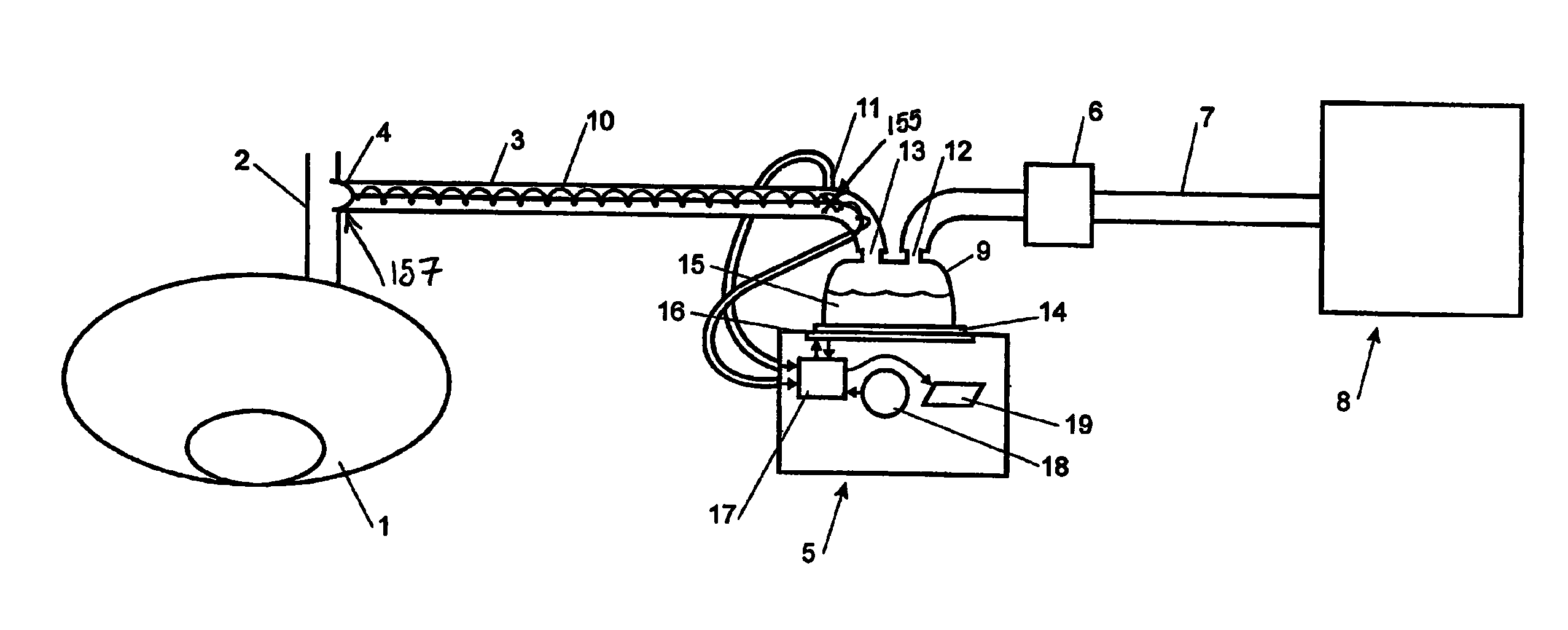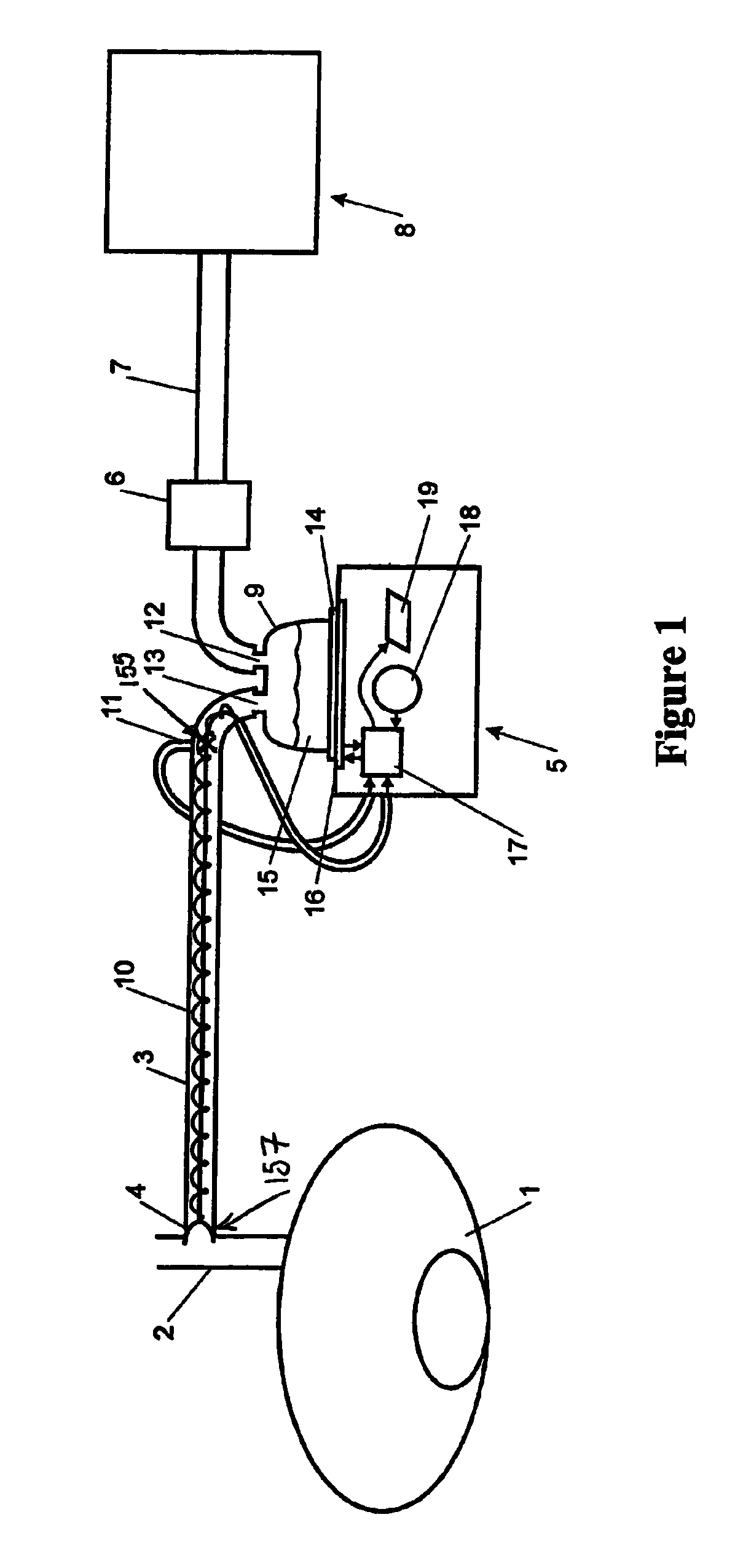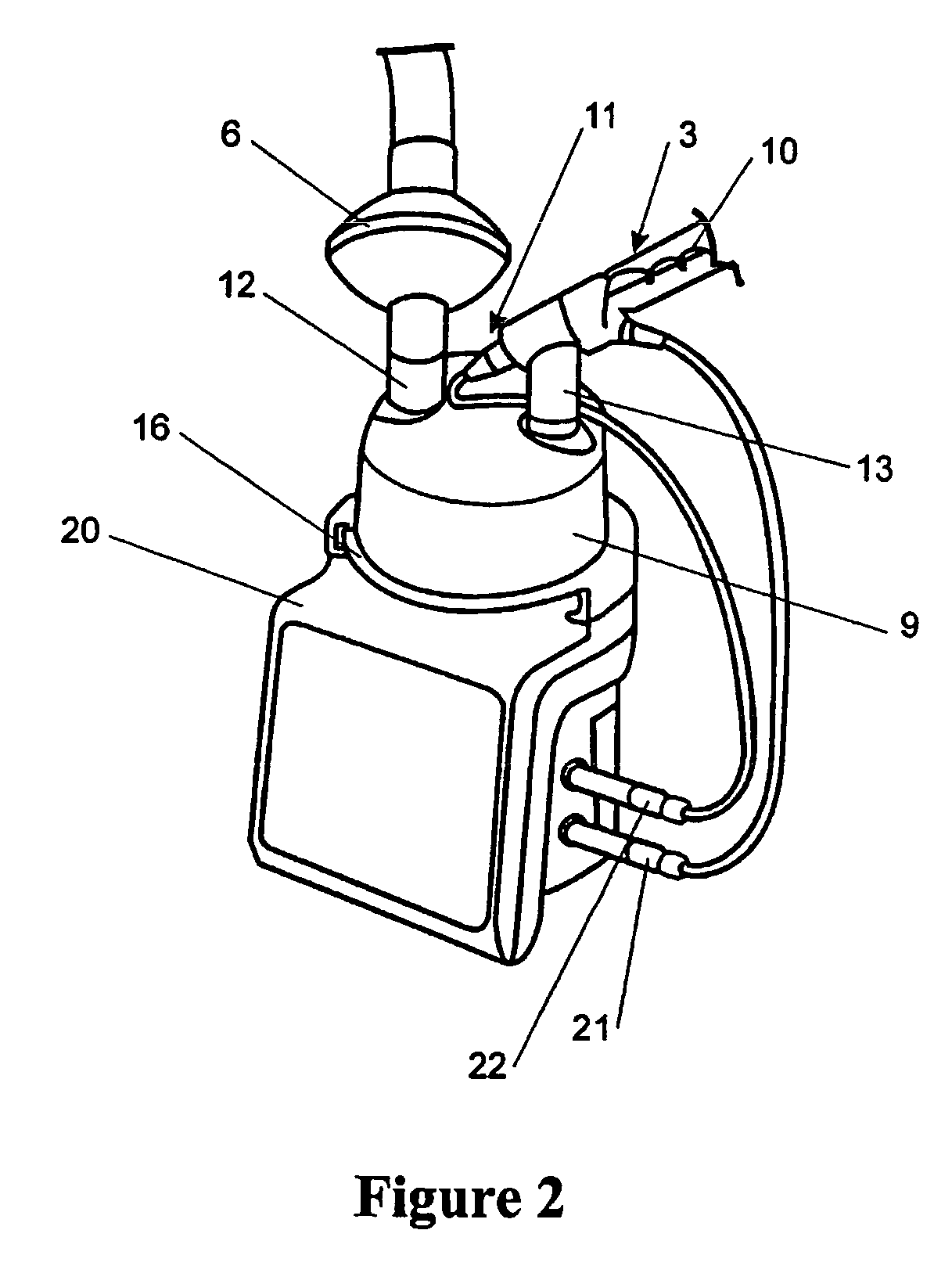Apparatus used for the humidification of gases in medical procedures
a technology of humidification apparatus and gas, which is applied in the field of apparatus used for humidification of gases in medical procedures, can solve the problems of difficult heat exchange of fluid and/or air used in these procedures, inability to enter cavities, and drying of exposed tissue, etc., and achieve the effect of reducing condensation
- Summary
- Abstract
- Description
- Claims
- Application Information
AI Technical Summary
Benefits of technology
Problems solved by technology
Method used
Image
Examples
Embodiment Construction
[0061]The following description gives but two examples of medical procedures which may use the present invention to heat and humidify gases, by no means is it meant to be limiting. The humidification apparatus and insufflator or integrated insufflating and humidifying apparatus as herein described may be used in many medical procedures for example, endoscopy, laparoscopy, thoracoscopy and upper and lower gastrointestinal endoscopy.
Laparoscopic Procedures
[0062]Usually during laparoscopic procedures, to establish a pneumoperitoneum (a cavity filled with gas within the abdomen) the abdominal cavity is punctured by either a needle or using a trocar. If using a needle, the needle is inserted into the inferior portion of the umbilicus and gas from the insufflator used to inflate the abdomen of the patient. The amount of gas used to establish a pneumoperitoneum depends on the size of the abdominal cavity, the development of the abdominal musculature, and the elasticity of the abdominal wal...
PUM
 Login to View More
Login to View More Abstract
Description
Claims
Application Information
 Login to View More
Login to View More - R&D
- Intellectual Property
- Life Sciences
- Materials
- Tech Scout
- Unparalleled Data Quality
- Higher Quality Content
- 60% Fewer Hallucinations
Browse by: Latest US Patents, China's latest patents, Technical Efficacy Thesaurus, Application Domain, Technology Topic, Popular Technical Reports.
© 2025 PatSnap. All rights reserved.Legal|Privacy policy|Modern Slavery Act Transparency Statement|Sitemap|About US| Contact US: help@patsnap.com



